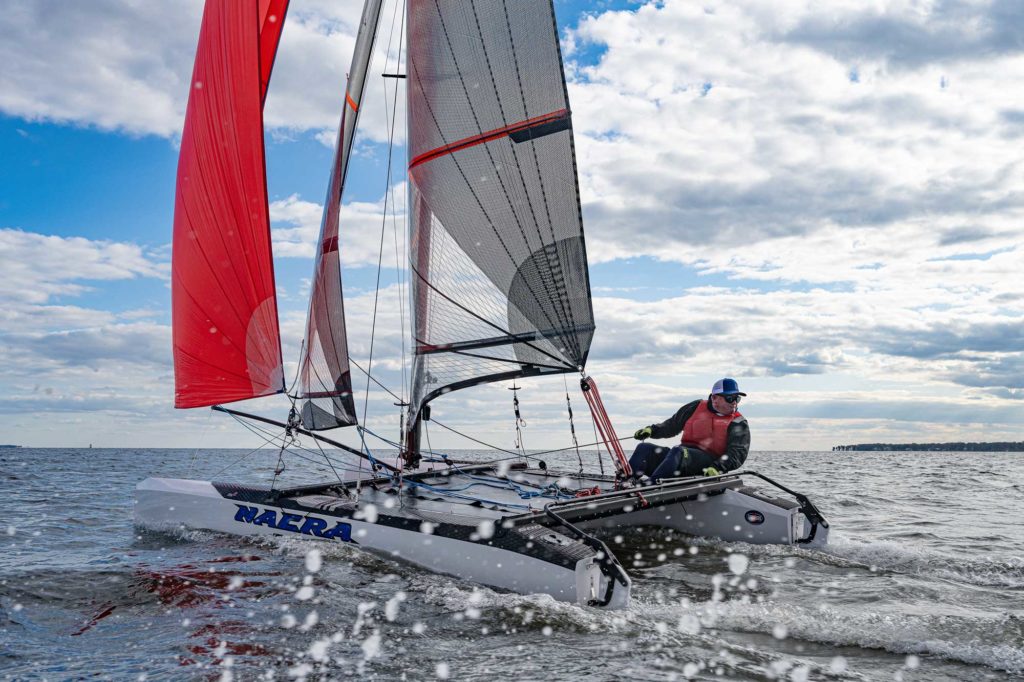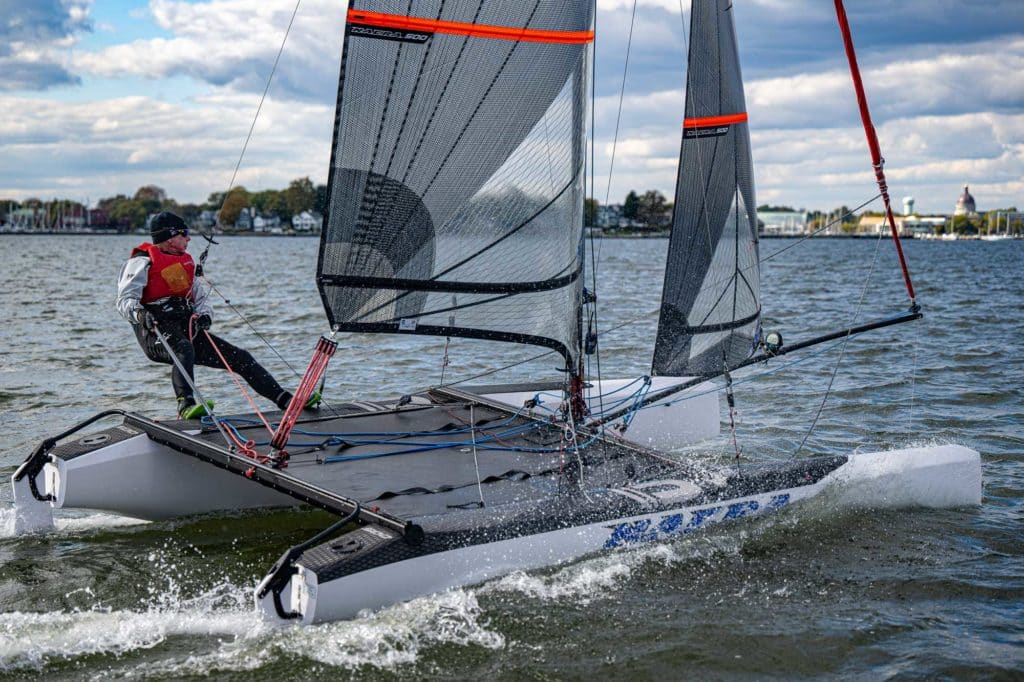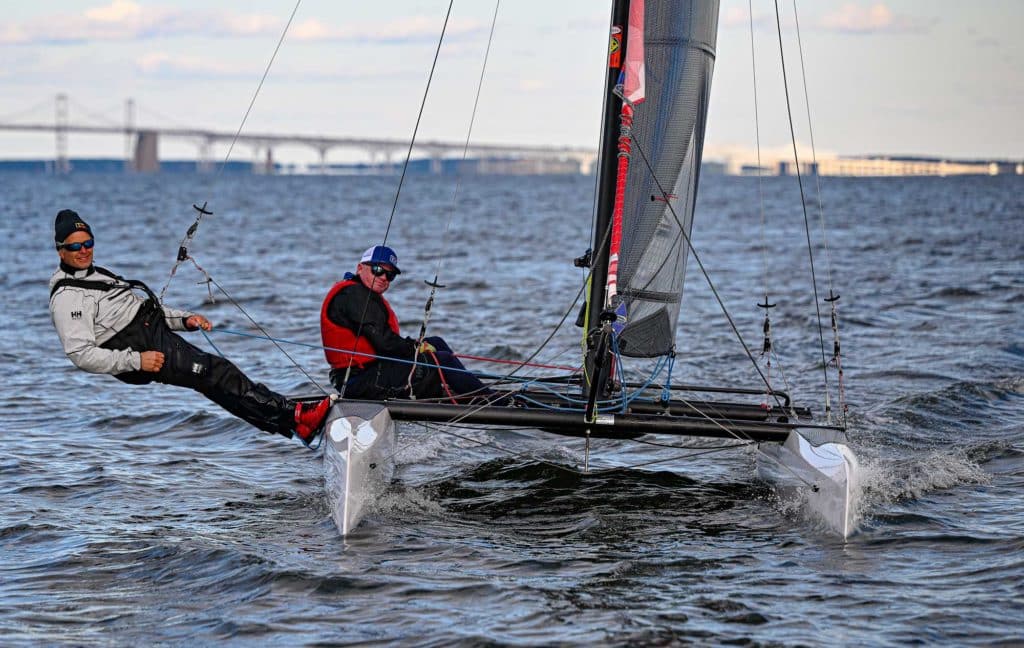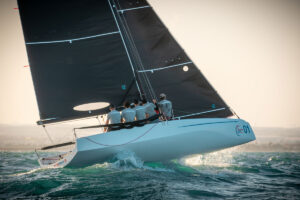
Sailing World Magazine’s annual Boat of the Year tests are conducted in Annapolis, Maryland, following the US Sailboat Show. With independent judges exhaustively inspecting the boats on land and putting them through their paces on the water, this year’s fleet of new performance-sailing boats spanned from small dinghies to high-tech bluewater catamarans. Here’s the best of the best from our 2023 Boat of the Year nominees »
Retro Redo
- Nacra 500 MK2 2023 Special Recognition
- Stated purpose: Entry-level beach-cat sailing
- Crew: One to four
- Praise for: Sailing experience, construction quality, value
- Est. price as sailed: $20,000
The Nacra 500 sailed onto the scene in 1998 as the 16-foot entry-level beach cat to rival the Hobie 16. With a sporty profile and powered-up rig, and no daggerboards to fuss with, the otherwise basic catamaran was a hit. Twenty-five years is a long time, however, and rather than reinvent the wheel, Nacra redesigned and reengineered the 500 from its skegs up. While technically a new model with a long list of updates, the judges eventually decided a Boat of the Year award would be a stretch to give a “Mark 2” boat. But after sailing it, they also felt it was too perfect to leave out of the running. It deserves special recognition.
There’s a good reason why the original 500 was a cult favorite: It was fast, fun and relatively easy to own—a great lake or beach house boat. Hardy Peters, from North Carolina’s East Coast Sailboats, is a lifetime cat guy who sells a lot of recreational beach cats. So, when he says this one is an excellent first boat, he knows why.
“The Mark 2 is designed for those entering the cat market,” Peters says. “And for anyone with the most basic cat-sailing experience, it’ll be a real easy pickup. And for monohull sailors, with a few cat-sailing pointers, you’ll be having a blast in no time.”

Nacra, Peters says, prides itself in the boat’s eco-minded construction, which is infused vinylester and a core material sourced from recycled plastic bottles. Zero waste in the production of the boat—from tooling to finish—is the company’s new approach. Whatever the process, the judges felt the boat was flawlessly finished, and the quality justified the $16,000 base-boat price tag. The additional spinnaker system is $2,500; with cat tracks and a cover, you’ve got yourself a complete setup for $20,000.
To improve the performance of the boat, the rig is 1.5 feet shorter than the old model, and the mainsail is now a semi-deck sweeper cut, all in an effort to bring the power in the rig lower for better stability. At just over 8 feet wide, the boat is notably stable, and the trampoline is big enough to comfortably lounge two adults in light air.
The judges appreciated the high-quality lines used throughout the boat, slightly oversize and soft. The standard tiller extension is aluminum, but a telescopic carbon tiller would be a worthy investment for fingertip steering.

At 319 pounds all up, the Nacra 500 is a substantial beach cat, so the cat tracks are a mandatory accessory, and two people will definitely be required to haul it up an inclined shoreline or boat ramp. For those who beach-launch, the skegs have reinforcement rods and extra gelcoat running along the entire length.
Volume in the bow area was increased to prevent regular pitchpoling and the tendency of the boat, says Allen, who went off on a solo tear halfway across the Chesapeake under gennaker, and the boat happily bounced across the wave tops without much stuffing. Not wearing a trap harness for his turn on the 500, he instead hooked his feet into the hiking straps, back over the weather rudder, and let it rip. “That was fun. It was no problem getting it up and going, and it was really forgiving—amazingly responsive to every little rudder or weight movement. It would have been a blast in the trap.”
Powlison had the pleasure of solo trapping in 15 knots of breeze and, as a relatively inexperienced cat sailor, he was hooked in, zipping right along with a big grin and looking as if he knew what he was doing. It was a testament to the power, stability and balance of the boat. “I could have kept sailing that by myself all afternoon,” Powlison says. “I didn’t want to give it up.”









